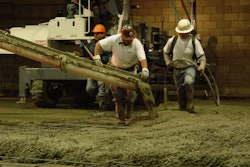CW Research forecasts 2014 global growth to accelerate to 4.2 percent and consumption to reach 4.21 billion tons. The research team of the global cement advisory boutique anticipates that renewed confidence in construction market conditions will positively affect the general global outlook, with annual consumption reaching 4.8 billion tons by 2018.
Globally, cement consumption picked up by 7.6 percent per year on average between 2009 and 2013, but the research shows 3.6 percent growth per year on average for the 2013-2018 period. Per capita cement consumption growth for 2013-2018 will also likely contract in comparison to previous years.
“There are several markets which we anticipate will surprise analysts in terms of consumption growth and production output. The revival of several real estate markets, the economic stabilization of markets which had been severely affected by the financial crisis, as well as renewed confidence in the construction sector give us reason to be cautiously optimistic about the future growth of cement markets,” according to Robert Madeira, Managing Director and Head of Research.
Worldwide, the total addition to the 3.9 billion-ton base capacity is estimated to reach 1.5 billion tons by 2018. In 2014, the largest increase in capacity will come from Egypt, where CW Research expects a growth of 21 percent. The year will end with capacity increases of over 10 percent for Indonesia, Iraq, Russia, Tunisia, and Vietnam.
Chinese market expected to be tempered
The Chinese cement market will slow in coming years. After consumption expanded by 10 percent in 2013, 2014 will end with only 5 percent growth. The country has long been struggling with overcapacity, which has been exacerbated by the recession.
The Chinese government is cutting back manufacturing capacity and several cement plants have already closed. Moreover, the residential property market, which was the biggest domestic cement consumer, fell in 2014 and is expected to continue to do so in the future. The Chinese real estate market is experiencing its slowest pace of growth in 24 years.
Divergent performance for markets
At the broader regional level, CW Research continues to predict divergent performance for different regions of the world. Developed regions will come to see slight recoveries in cement demand. CW Research expects United States consumption to rise by 6.8 percent on average per year through 2018.
Western European consumption is forecasted to expand around 2 percent on average per year. For 2013-2018, CW Research expects developed regions to escape downward trends and developing regions to underperform when compared to previous years.
“CW Research is seeing the global cement market making sure steps towards a more balanced future, but that is not to say that the sector is safe from meeting the volatilities it has experienced in the past. Political instability and geopolitical tensions may once again take their toll on the cement market, preventing it from performing at the rates we have anticipated in this forecast. Nonetheless, the global economic growth in the coming years, coupled with the positive outlook on GDP levels, can be expected to secure a smoother progress for the cement sector,” states Madeira.
This year’s forecast gives a positive outlook on the future of cement volumes. Though growth will not reach the figures experienced between 2009 and 2013, the better performance of markets that were troubled in the past (e.g., United States, Europe) gives a positive nod to the future.


















